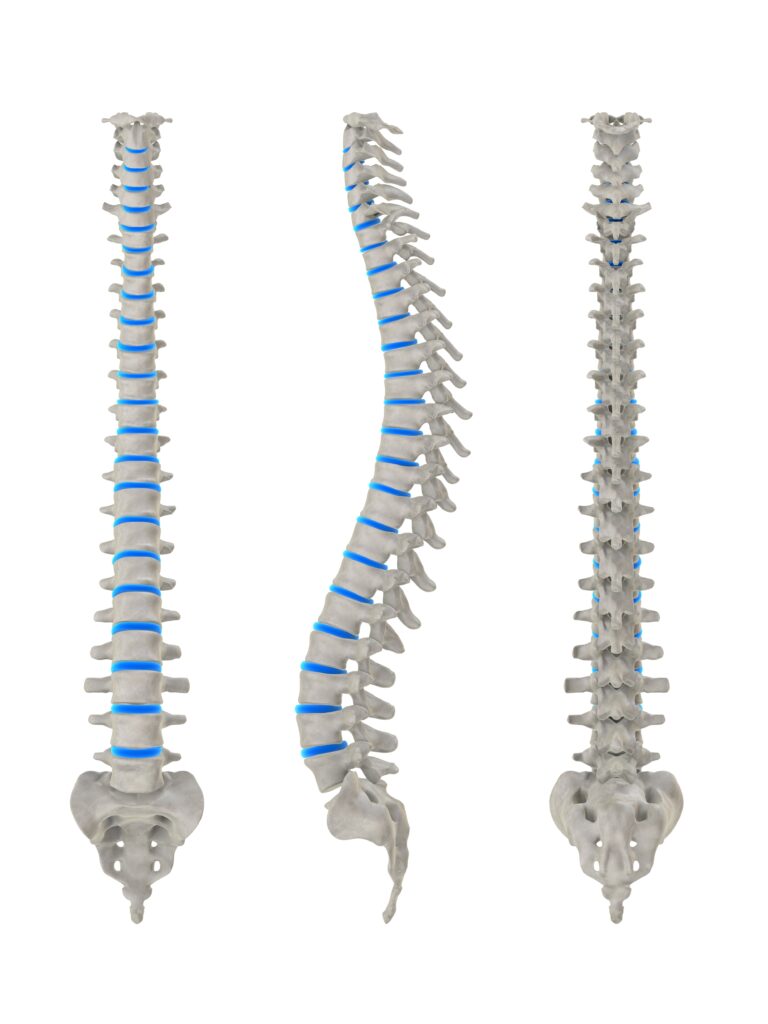One of our most complex anatomical body parts, the spine plays many important roles such as holding the body upright and connecting the head with the torso and pelvis. The spine allows the body to bend forward and backward, rotate, and to a limited extent, bend laterally. Because of its multifaceted structure and the load posed on the spine with movement and activities, the spine is subjected to several pathologies as a result of sudden injuries and overuse.
At its core, the anatomy of the spine consists of 24 vertebrae. Each vertebra is made of distinct structures known as the vertebral body, laminae, pedicles, spinous, transverse and articular processes. The vertebrae are separated by discs that absorb the impact posed on the spine.

Three views of the spine: anterior, lateral and posterior
The spine is divided into different segments, each one having a variable number of vertebrae: the cervical spine at the neck consists of 7 vertebrae; the thoracic spine with 12 vertebrae connected laterally to the chest and ribs; the lumbar spine formed by the largest 5 vertebrae; the sacrum consisting of 5 fused vertebrae that become part of the pelvic ring; and finally, the lowest portion, the coccyx or tailbone, which is formed by 5 small bones fused together. The small facet joints articulate each vertebra with the ones above and below it.
The spine has a natural curvature with an “S” shape, creating a lordosis (concave curve) in the cervical and lumbar spine and a kyphosis (convex curve) in the thoracic spine. The shape of the spine can be altered by a variety of pathologies. One such pathology is scoliosis (image below), which results in a lateral deformity of the spine.

X-ray of the lumbar spine presenting evident scoliosis
Importantly, the spine encloses and protects the spinal cord, from which all the nerves depart to innervate our musculoskeletal system and internal organs.
This is only a brief overview of the anatomy of the spine. Following this link, you can access in more details the full description of the anatomy of the spine and spinal cord along with high-quality images to aid the understanding of these complex structures.
To access the examination of the spine including a variety of tests specific for each pathology of the bones and nerves click here.
Disclaimer: All images and content published in the Lex Medicus, and Lex Medicus Publishing websites are protected by copyright.
